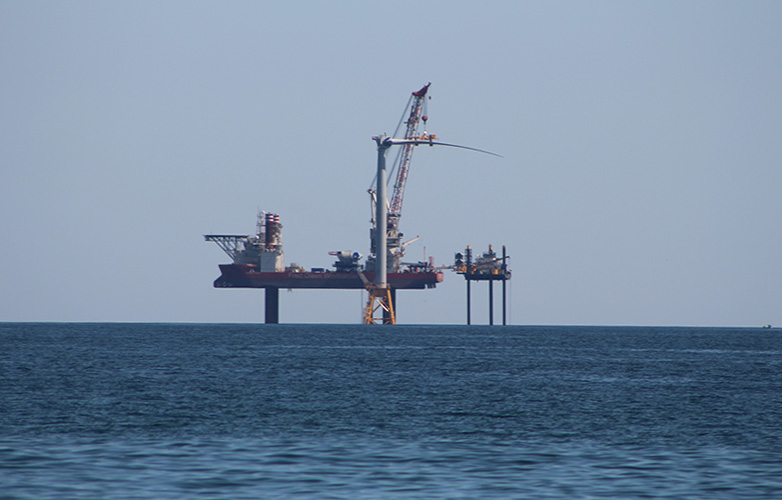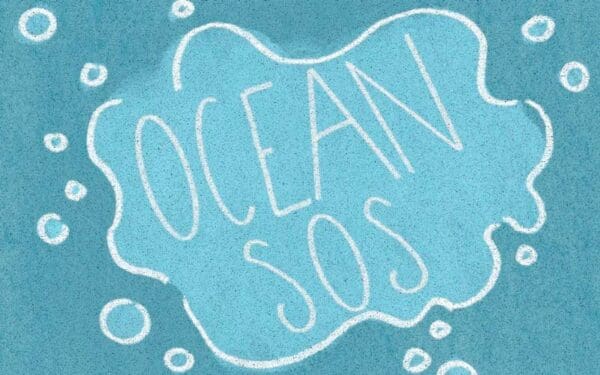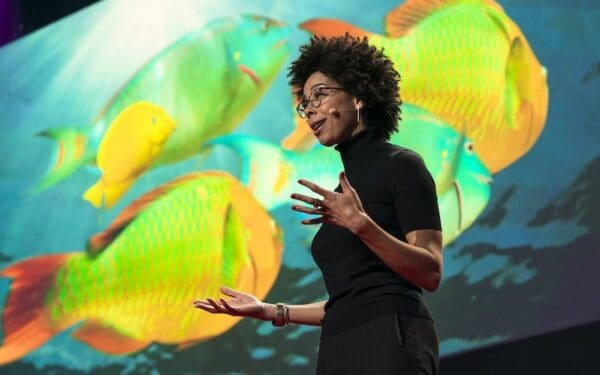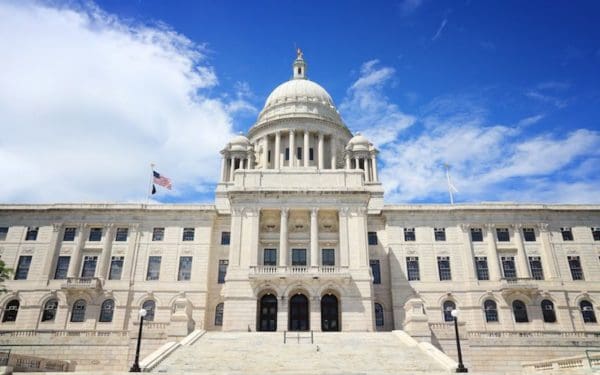
We must consider potential harms and benefits to people and wildlife when deciding where to place offshore wind turbines and their land-based infrastructure. Photo: Laurie O'Reilly
Offshore wind is one of the most promising paths we have toward clean energy. But history tells us it’s easy to take a wrong turn off a promising path when it comes to generating electricity – especially if that wrong turn means laying the burden of new utility infrastructure mainly on the shoulders of those in New England’s low-income, immigrant, and communities of color.
For decades it has been exactly those communities that have borne the burden of the darker side of “progress” — whether it be the effects of air pollution from smog-belching power plants or segregation by virtue of congested highways slicing through Black and Brown neighborhoods. With at least nine new offshore wind farms geared to start spinning in New England by 2028, now is the moment to consider what thoughtful and inclusive offshore wind infrastructure looks like.
Wind farms in the works over the next decade are expected to tie into existing electrical substations along the coast from Boothbay Harbor, Maine, to Astoria, New York. But from this point on, we have a unique opportunity to build large-scale offshore wind farms in a way that not only generates renewable energy but also protects ocean wildlife and safeguards the quality of life in coastal and Indigenous communities.
Now is the time to be thoughtful about minimizing human harm, recognizing that there are always some environmental impacts, even from offshore wind and other renewables. Let’s honestly consider those burdens, minimize them, and ensure that clean energy’s benefits and burdens are distributed equitably. Here’s how:
Think Holistically
Instead of considering wind farms individually, we should evaluate the impact of separate wind projects as one unified whole. Until now, projects like the Revolution Wind Farm, about 15 miles east of Block Island, Rhode Island, opening in 2025, or the Mayflower Wind Farm, about 20 miles south of Nantucket, Massachusetts, opening in 2027, have not necessarily been evaluated in this way. In every case, CLF supports a comprehensive environmental review. These reviews should be standard everywhere and gather input from Indigenous Tribes, the local fishing industry, environmentalists, coastal residents, and other stakeholders.
Start Early
There is no doubt that offshore wind farms are critical to cutting carbon pollution and helping us meet our targets for slashing climate-damaging emissions in New England. They are one of the best ways to avoid building new fossil fuel infrastructure that will damage our planet and pollute our communities.
But if we hope to develop offshore wind infrastructure responsibly, we must allow enough time for meaningful community input. That means engaging early on with residents and potentially impacted people to evaluate the nuts and bolts of each project. Community members bring unique knowledge, experience, and insight – from familiarity with historical uses of the waters impacted, to the areas most valuable for fishing, to shipping traffic patterns. This input must be considered when evaluating the impacts of offshore projects, as should the community’s interest (or opposition) to serving as a port and staging area for them.
Involve Indigenous Nations
Too often, Indigenous communities have been functionally excluded from offshore wind development discussions. In other words, even when Indigenous groups are consulted as required by federal law, their legitimate concerns may never be heard because they may lack the bandwidth and resources to participate in arcane governmental processes meaningfully.
The Mashpee Wampanoag Tribe in Massachusetts sees the North Atlantic right whale as a cultural ancestor. If an offshore wind turbine affects a right whale, it affects the entire Tribe, even if a Tribal member lives far from the shore. That concern should be heard and addressed – not lost amidst a flood of documentation about a proposed project.
Indigenous Tribes should have a say in determining what cultural artifacts might be disturbed by offshore wind infrastructure. And they should benefit from any economic opportunities sparked by that development. Tribes must be provided with the financial resources to staff the work and hire consultants to ensure their concerns are heard.
Let the Community Benefit
Some offshore wind companies have already started by signing community benefits agreements with cities and towns where undersea cables meet land-bound infrastructure. Benefits to the community can come in various forms, including a commitment to provide jobs or an annual monetary payment that becomes part of a “community benefits fund.” CLF believes that any community benefit should go to those who have suffered the most from our current energy infrastructure, particularly communities where English is not spoken at home, low-income, and Black, Brown, and Indigenous communities. We want to see benefits going especially to those places that haven’t seen benefits before.
Protect Marine Life
When building large-scale wind projects offshore, we must ensure fish, birds, and other wildlife, like the critically endangered North Atlantic right whale, can thrive in New England waters with massive turbines spinning in the sky and cables plumbing the depths of the sea floor. We want to preserve the ability for wildlife – and people – to flourish.
At CLF, we know this is all possible. We know, as well, that clean offshore wind energy is key to reining in climate change.
Now let’s roll up our sleeves and be responsible about how we do it.



